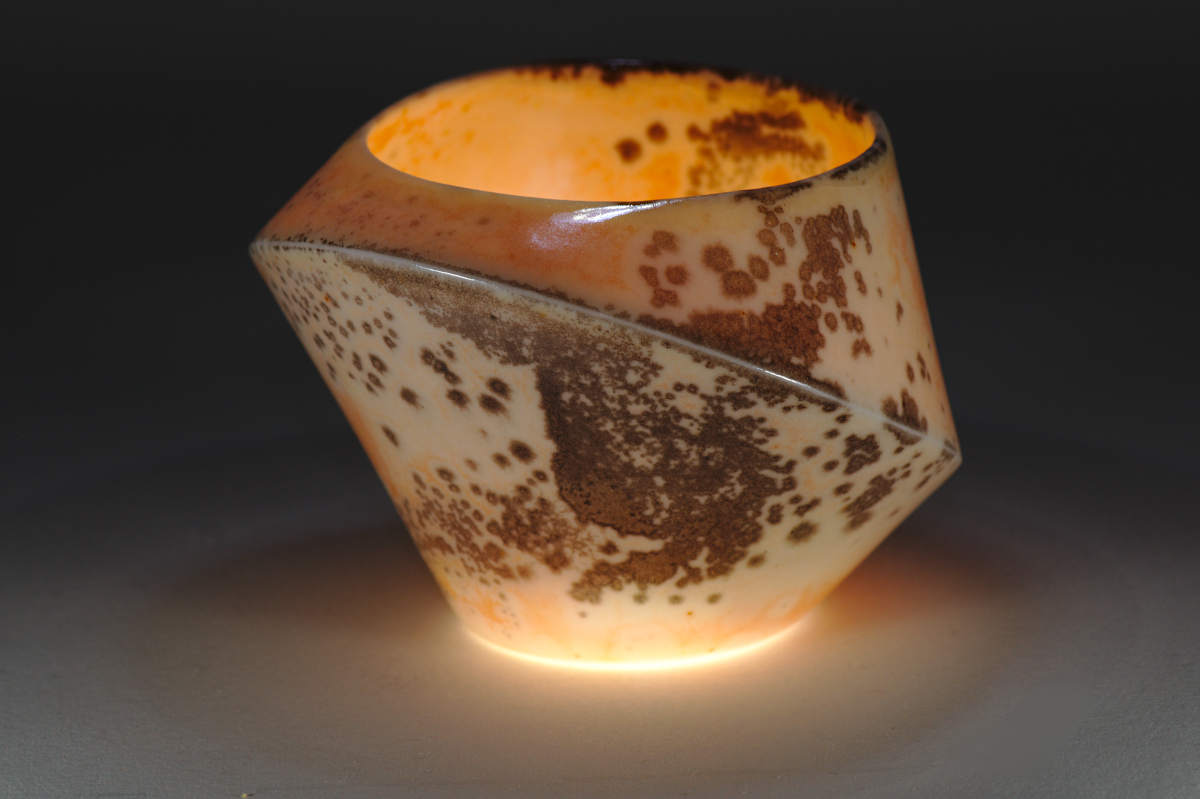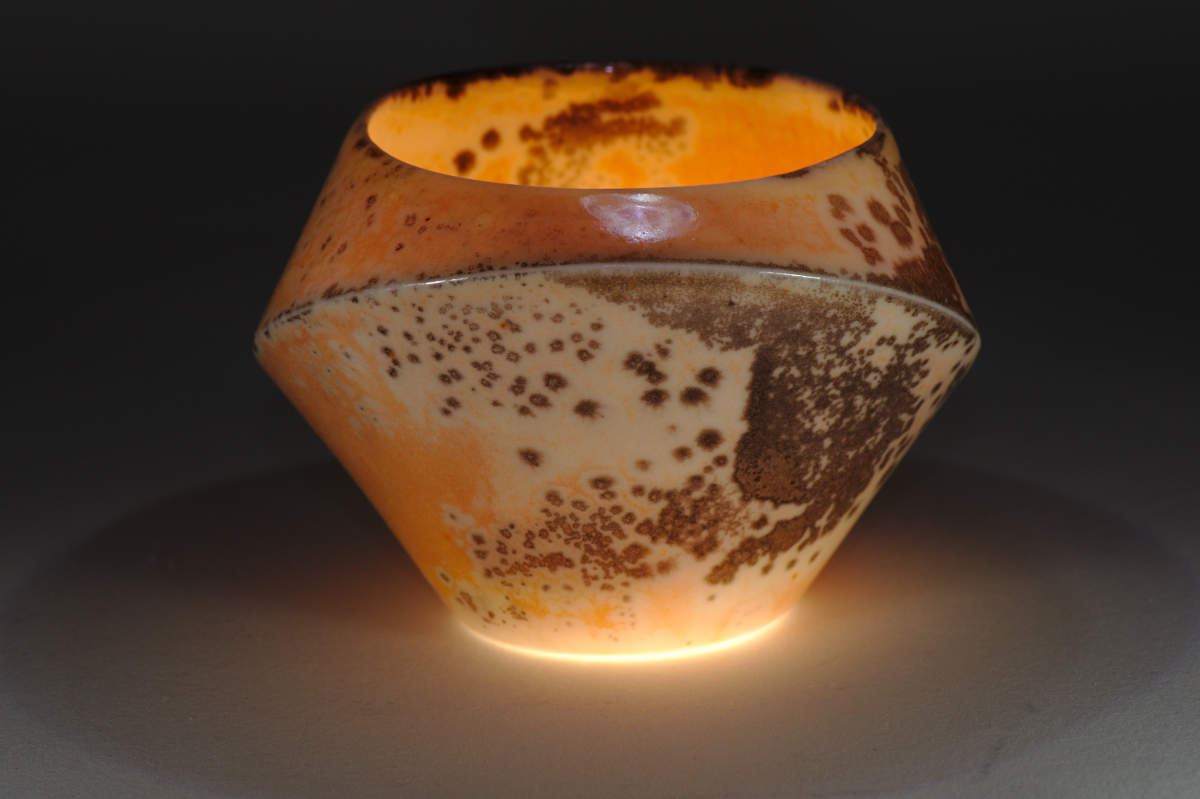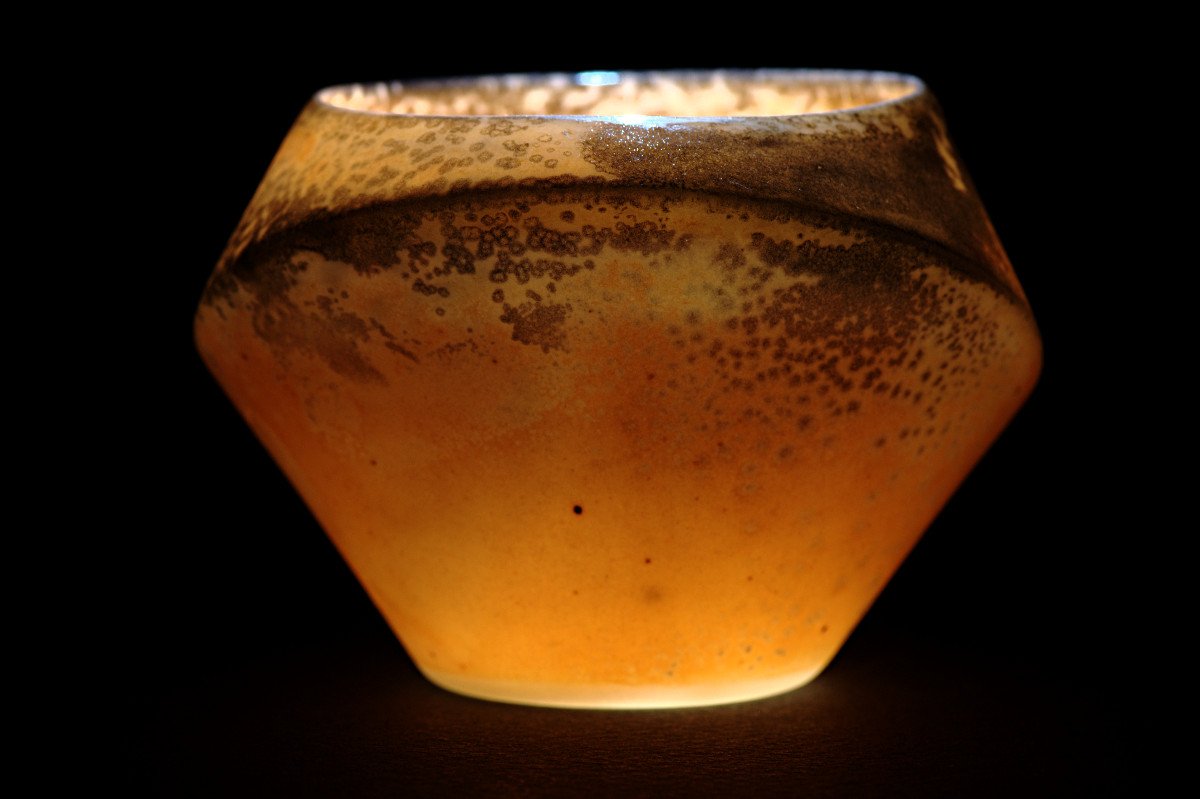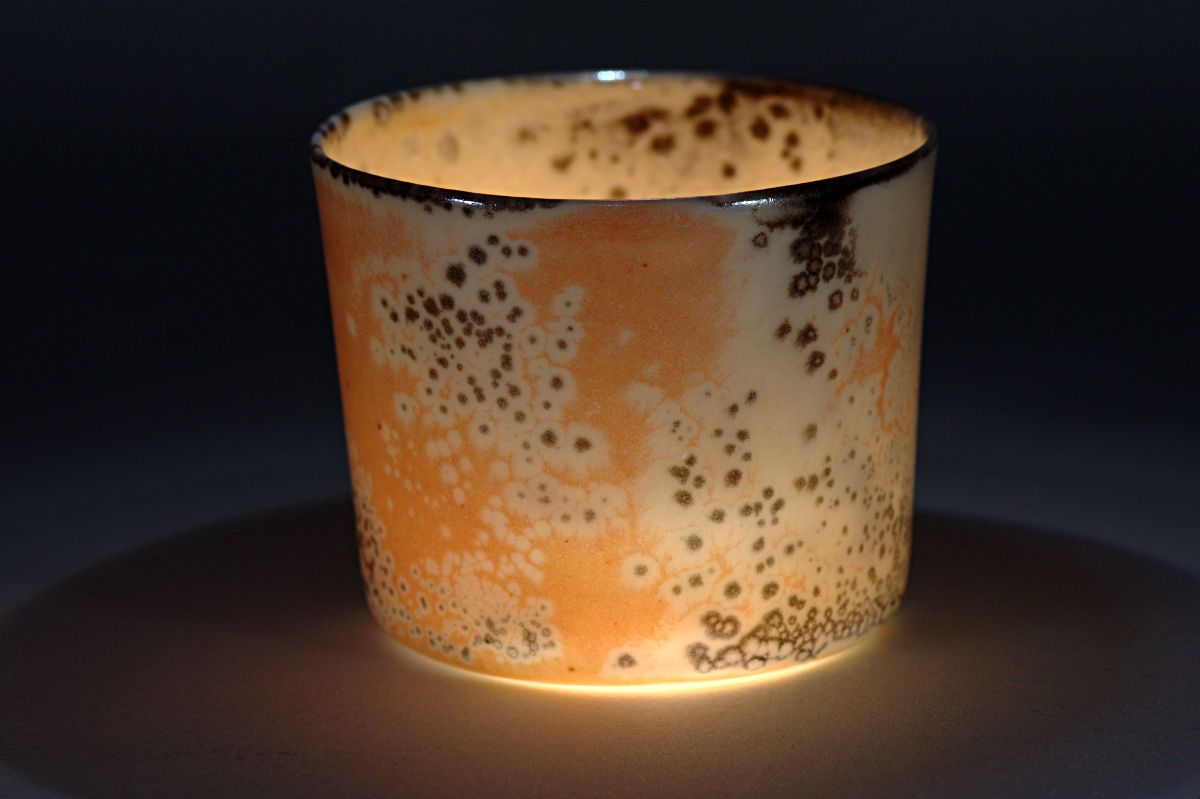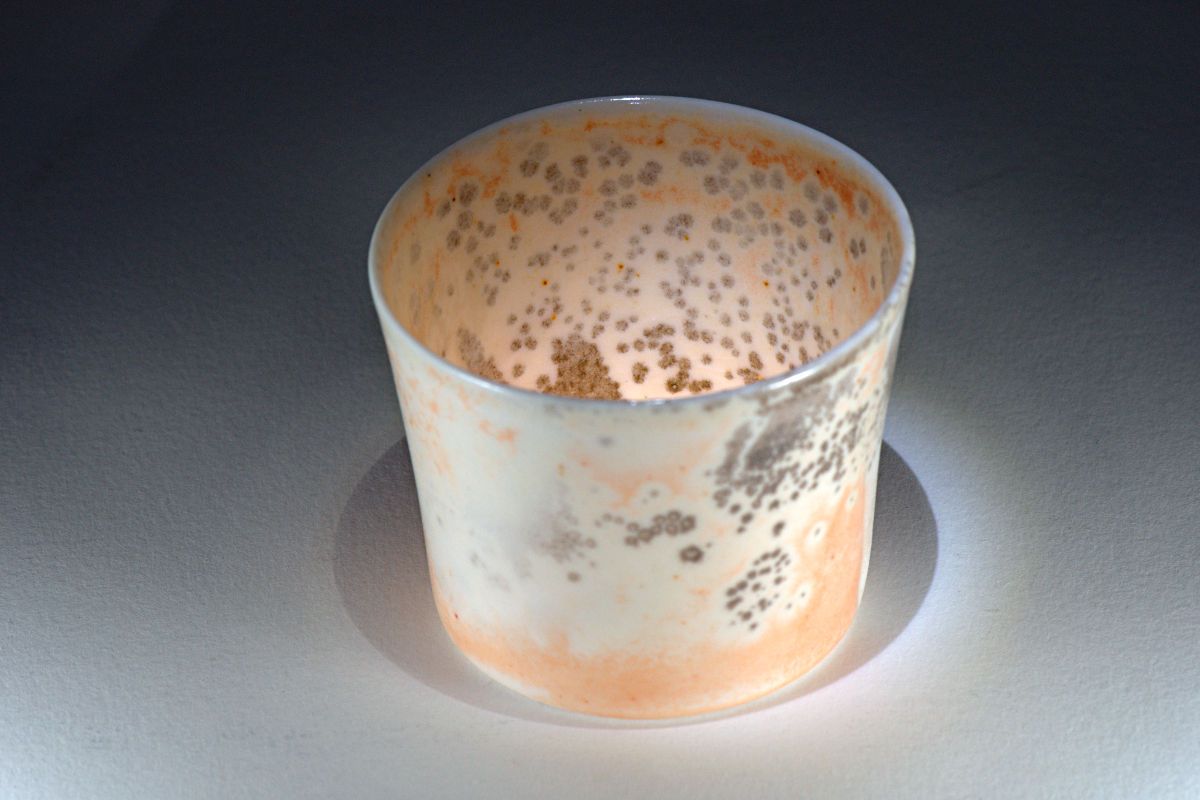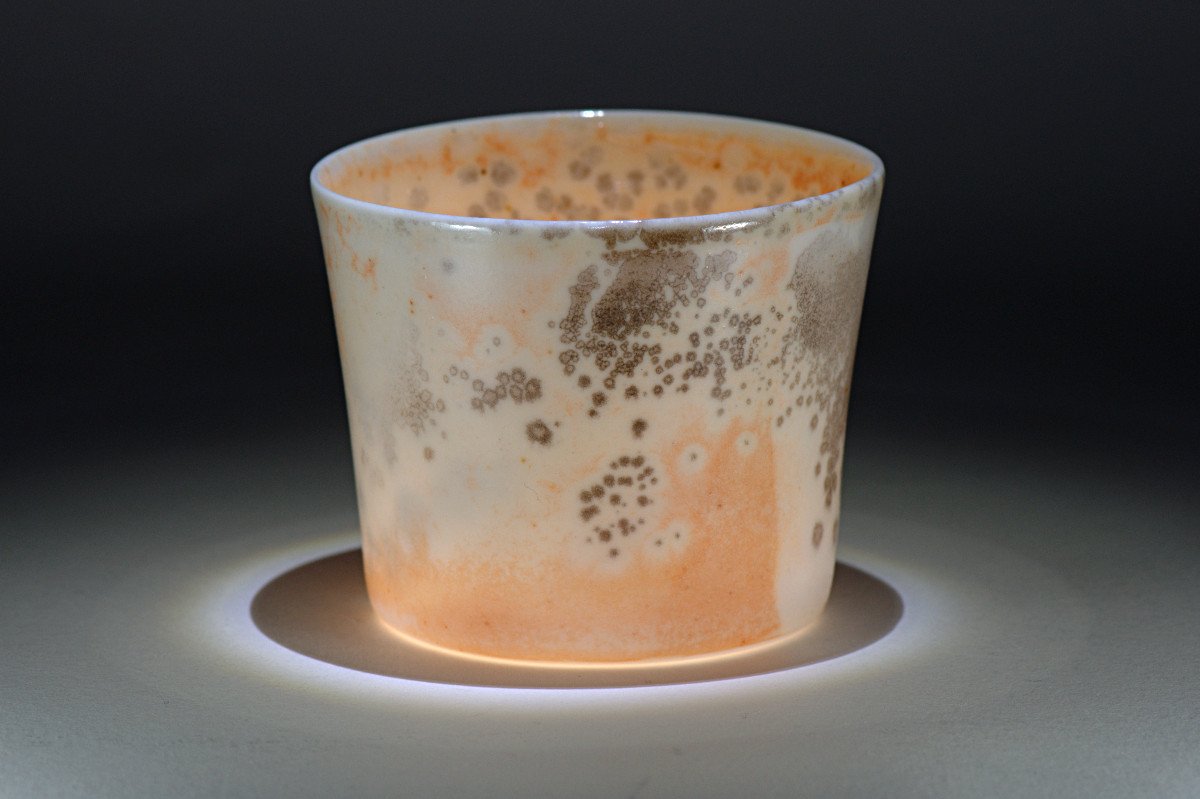
Shino Glaze
The shino cup Orbit is from a sake set created in 2012. It consists of a flask, Arc, and three cups, Orbit, Wave and Cone. The cups are 7cms in diameter and 5.5cms high. The walls are approximately 2mm thick. The pieces are light and translucent, yet have the strength and durability afforded by this fine world-class porcelain.
Rapid Prototyping and 3D Printing
The shino cup Orbit was first created in 3D modelling software prior to rendering using rapid prototyping technology. The cup is slip cast using Southern Ice porcelain and glazed with carbon trap shino.
The cup is also available in an ice blue Qingbai glaze.
Southern Ice Porcelain
These vessels are constructed from translucent Southern ice porcelain fired to 1280°C in reduction in a gas kiln.
For more images and further information on the nature, origins and qualities of porcelain, including Southern Ice porcelain, see the Southern Ice porcelain page.
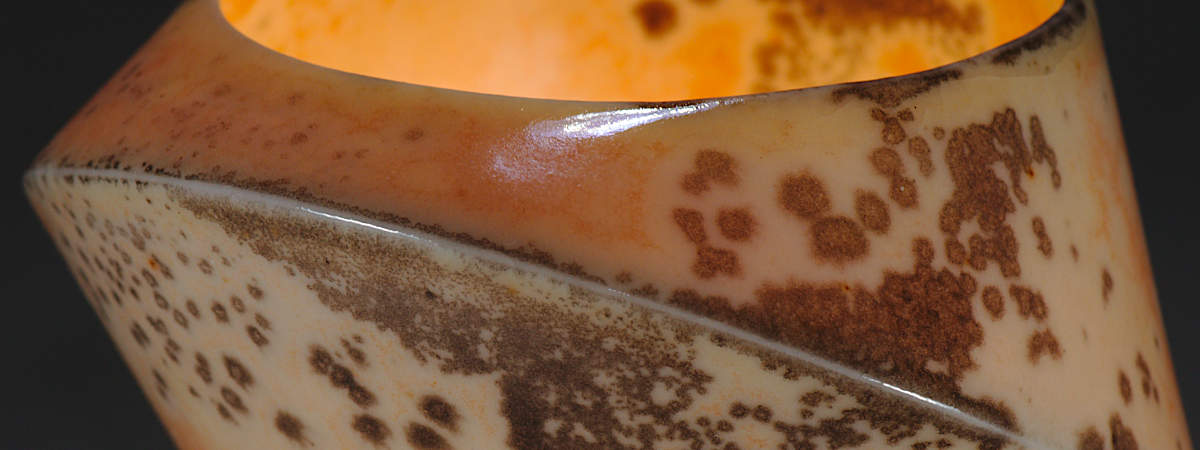
Origin of Shino Glazes
Shino glazes were first created during the Momoyama period (1573 - 1615) in Japan. Several types of shino glaze were developed exhibiting different colours and surface textures. They often have a dimpled surface texture like lemon skin or even 'crawl' away from the clay body revealing patches of unglazed clay. While such an organic, irregular surface is part of a Japanese aesthetic and was highly prized for tea ceremony wares it may be seen as a defect in the west where a perfectly even glazed surface is commonly expected in functional ware. A common variety of shino is a thick white glaze with the appearance of snow. It is thought this type of shino was a result of the desire to emulate the surface of a pure white clay body known as porcelain, which had been discovered in China.
View a collection of shino glazed ware on my pinterest site.
Carbon Trap Shino Glaze
A type of glaze now known as American shino was developed in the early seventies by Viginia Witt, who, as part of a project set by the University of Minnesota to try and replicate early Japanese glazes, was the first to add soda ash to a shino type glaze. When fired in the reducing atmosphere of a gas kiln as the soda ash melts it traps the carbon from the atmosphere of the kiln resulting in the grey and black speckling of the glaze and also accounts for the peach coloured bloom.
I adapted the glaze used on these porcelain vessels substituting American with Australian ingredients.
Carbon trap shino can be quite varied in appearance as it is very sensitive to firing conditions, thickness of application and clay body, the glaze appears quite differently on the Spherical Vases I completed in 2018.




